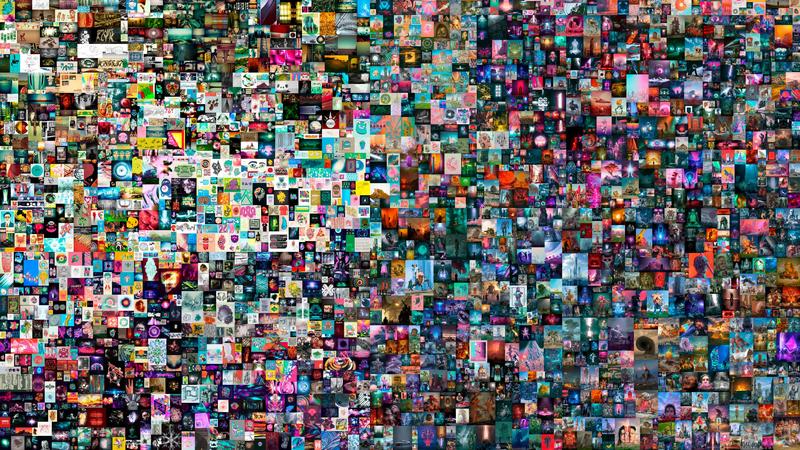Token of art appreciation


Although NFT-backed sales are gaining traction in the art world, questions about the viability of this new digital currency abound. Joyce Yip has some answers.
In the past six months, three major auction houses - Christie's, Sotheby's and Phillips - opened their NFT sales account. And all of them fetched at least seven digits. At Christie's March 2021 sale Beeple's (Mike Winkelmann) EVERYDAYS: THE FIRST 5000 DAYS went for a whopping $69.3 million - the third-highest price achieved by a living artist, topping Jeff Koons' orange Balloon Dog ($58.4 million).
An acronym for "non-fungible tokens", NFTs are units of data stored on the blockchain that cannot be changed or replaced. A 10 dollar bill, for example, can be traded for two fivers, and hence is fungible, whereas an NFT is unique and conversion-resistant. Usually, NFTs are used to represent cyber files, including digital art. Although an NFT holder does not have exclusive right to the concerned artwork - meaning everyone with access to the internet can still obtain and copy the file - an NFT is proof of the item's authenticity, and purchasing one gives the buyer bragging rights, similar to owning an original piece of art, signed by the artist.

Not so long ago
NFTs captured the art world's attention in 2017 after two "creative technologists" - John Watkinson and Matt Hall - debuted 24-by-24 pixel images of pipe-smoking heads that were soon being treated as one-of-a-kind collectibles. More such art surfaced in the market, some more gimmicky than others, such as the googly-eyed CryptoKitties, which has accumulated a total trading volume of $39 million since its release in 2017. As of last year, the NFT market is worth about $250 million, thanks to "revenge spending" during COVID-19 and the new-found enthusiasm of Bitcoin millionaires.
While skeptics warn that the exuberance currently seen around NFT might be a passing fad, even traditional brands dealing in tangible products - like DC Comics and Nike - have embraced this new digital currency format. And that three of the world's major auction houses have jumped on to the NFT bandwagon has further legitimized its growing influence.
NFTs are prized for the unique stamp of authenticity they place on a work of art and also help trace all past transactions. Still, it's not one-size-fits-all.
For instance, Mad Dog Jones' REPLICATOR, sold recently by Phillips, turns the idea of investing in art, i.e. buying an original work with no duplicates, on its head. Its Generation 1 begins as an illustration of a photocopy machine in an office and will continue to produce new NFTs every 28 days for six months. Each subsequent generation will produce one less artwork in its lifetime until Generation 7 emerges. The piece's anonymous buyer possesses all the NFT jams - the technology that could be applied to stop the process of replication.



































